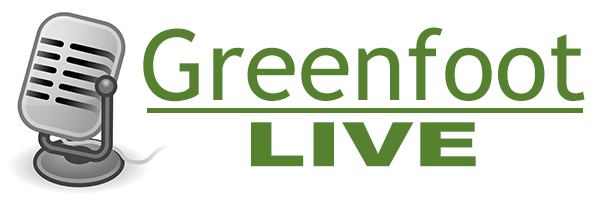Episode 2: Let’s jump right in and write some code!
Links:
The Hawk-Hunt scenario (download the scenario, unzip it, open in Greenfoot).

Episode 2: Let’s jump right in and write some code!
Links:
The Hawk-Hunt scenario (download the scenario, unzip it, open in Greenfoot).
Finally it is here: The first of the New Joy of Code programming series.
In this series of videos I will show you how to program in Greenfoot and Stride. Later in the series, we will also get to programming in Java. But ultimately, what you will learn are the principles of object-oriented programming, which you should then be able to apply to any language.
This first episode shows you what Greenfoot is, and what Stride looks like.
Check back soon for more episodes.
The most popular pages on this blog are the episodes of the ‘Joy Of Code’ video series, which teaches programming with Greenfoot. This video series, however, is somewhat outdated by now. So I have decided to update it and start again.
So, coming soon: The New Joy of Code. It will be similar to the old one, a series of short videos that can be used for self study, or in a classroom, but there will be differences: First, I will, of course, use a recent version of Greenfoot (Version 3.1.0 at the moment), but more importantly: I will use our new language Stride for the tutorial. We will later also transition into Java, but Stride is such a great language for beginning to program, that I really want to start with that.
With the videos – you’ll see!
 In order to provide more ways to support teachers who are using Greenfoot (or thinking about using Greenfoot), as well as anyone else interested in Greenfoot, we are starting a series of live chat sessions:
In order to provide more ways to support teachers who are using Greenfoot (or thinking about using Greenfoot), as well as anyone else interested in Greenfoot, we are starting a series of live chat sessions:
Greenfoot Live
Programming Education Chat With The Greenfoot Team
Greenfoot Live will be a regular chat event where members of the Greenfoot team will be live online and talk about Greenfoot, among ourselves and with you – the users of Greenfoot. The event is aimed mostly at teachers who use Greenfoot in their classes, but also at general Greenfoot users.
We will discuss educational aspects, as well as general programming topics, related to Greenfoot.
You will have a chance to listen to us talk, as well as ask questions.
The first Greenfoot Live event will be held on
Monday, 8 May 2017, at 5pm UK time
That is
After this first event on 8 May, we will host Greenfoot Live every two weeks. Recordings of these events will be accessible afterwards for viewing retrospectively.
Don’t forget to mark this date in your diary with a big red pen and join us in a couple of weeks!
Are you in or near London? Interested in Greenfoot?
I am giving a talk in a few weeks here at King’s in the School of Education about our work with Greenfoot and Stride:
19/04/2017 (13:30-14:30)
The talk is open to everyone. If you are interested, please come along.
When you give up the idea of characters as your sole point of source code representation, a host of possibilities opens up to improve the visual appearance if your program. This short video shows some of then as implemented in Stride.
Stride is implemented in the Greenfoot environment, available from here.
In the third part of our series introducing Stride and frame-based editing, we look at the various ways in which the editor can provide you with help in writing your program. If you consider using Stride, it will come handy to know these sources of information.
Stride is implemented in the Greenfoot environment, available from here.
This video is mostly for those who want to get a first impression of Greenfoot. We write a simple game in seven minutes (realtime; no cuts!), using Stride. For those who already know Greenfoot with Java: You will see that writing in Stride is not very different to writing in Java. For those new to Greenfoot: This is a quick introduction to Greenfoot and Stride at the same time.
As always, Greenfoot is available for free download.
This is the first in a series of videos introducing Stride. Don’t be put off by the intro at the beginning – you will see code soon enough.
I welcome questions and comments, especially suggestions what you would like me to address in further posts or videos.
At the Greenfoot headquarters, we – that is: Neil Brown, Amjad Altadmri and myself – have recently worked on creating a new language within the Greenfoot environment: Stride.
The interesting thing about Stride is not so much the language design itself, but its interaction design: editing programs involves different interactions than existing editors.
The goal is that Stride sits halfway between block-based systems (such as Scratch, AppInventor, PencilCode, Alice, etc.) and text-based editors (such as Java or Python), maintaining advantages of both.
I will start a series of posts (text and/or video) here over the next few weeks trying to tell you what Stride is and why you should care. In the meantime, you can get Greenfoot, install it, and have Stride ready to go when the introduction here starts. Stride is built into Greenfoot from version 3 onwards.
Check back soon for the first overview video.